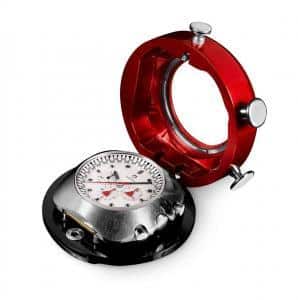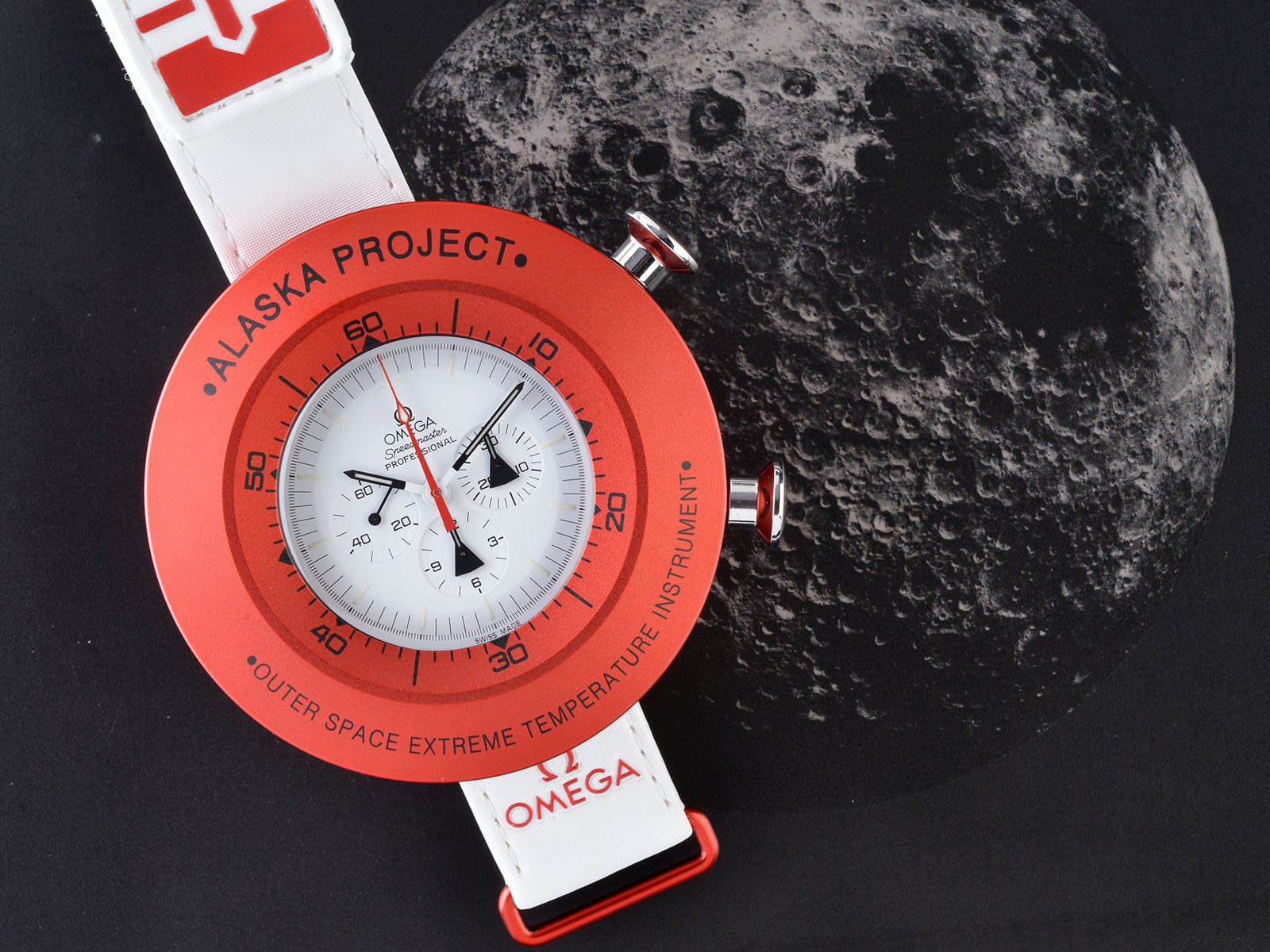Research in currently underway on the Alaska Project and the information given bellow is now yet complete and might need later correction. It should therefore not be considered as the last word on the matter. Alaska Project was launched by Omega as a development project for NASA in the late 1960s. The name has nothing to do with the American state of Alaska unless it is to evoke particularly low temperatures. There were at least three projects undertaken over specific periods each of which resulted in several models.
The purpose was to make the Speedmaster still more applicable to NASA’s requirements, especially by making it less sensitive to the temperature extremes found in space and on the moon.
To achieve this, Omega worked on at least three aspects:
Creating a heat shield by adding a removable case in red anodized aluminum, with a surface coating of quartz condensed in a vacuum. This shield was to enable the watch to keep going in extreme variations of temperature.
Adopting a silvery-white dial instead of the black dial to better reflect the heat of the sun.
Improving the case’s resistance to temperature extremes, using such materials as titanium, which moreover lowers the weight of the watch, being around 60% of the density of steel.
There are at least three different prototype versions for the first project. The first two versions have the following characteristics:
a heat shield
a specially shaped case made in titanium
a white or silver dial with a Racing type minutes scale
no Speedmaster Professional inscription on the dial, only OMEGA
an applied Ω logo
the chronograph function highlighted with red hands
luminous hands for the minutes and hour counters. This feature needed the so-called “Rocket” or “Apollo” hands for balance weight distribution.
The third version is less of a departure from the conventional Speedmaster and could have been for a less costly variant than the previous two. It has the following features:
a heat shield
a conventionally shaped case in steel
a white dial, with a conventional minutes scale and the inscription Speedmaster Professional
black hands except for the chronograph seconds hand in red
luminous hands for the minutes and hours counters like the other two versions, but in black.
It is interesting to note that the two examples of this third version that we have been able to examine are fitted with a type B2bis. 220 bezel that has the graduation error of 225 220 190 instead of 225 200 190. This indicates that these models were probably assembled in the fall of 1970.
Despite all these efforts, NASA did not feel it necessary to change the model for its astronauts, suggesting that the conventional Moonwatch already met all its requirements.
The third version of this undertaking served as the basis in 2008 for the Alaska Project 2008 limited series.







